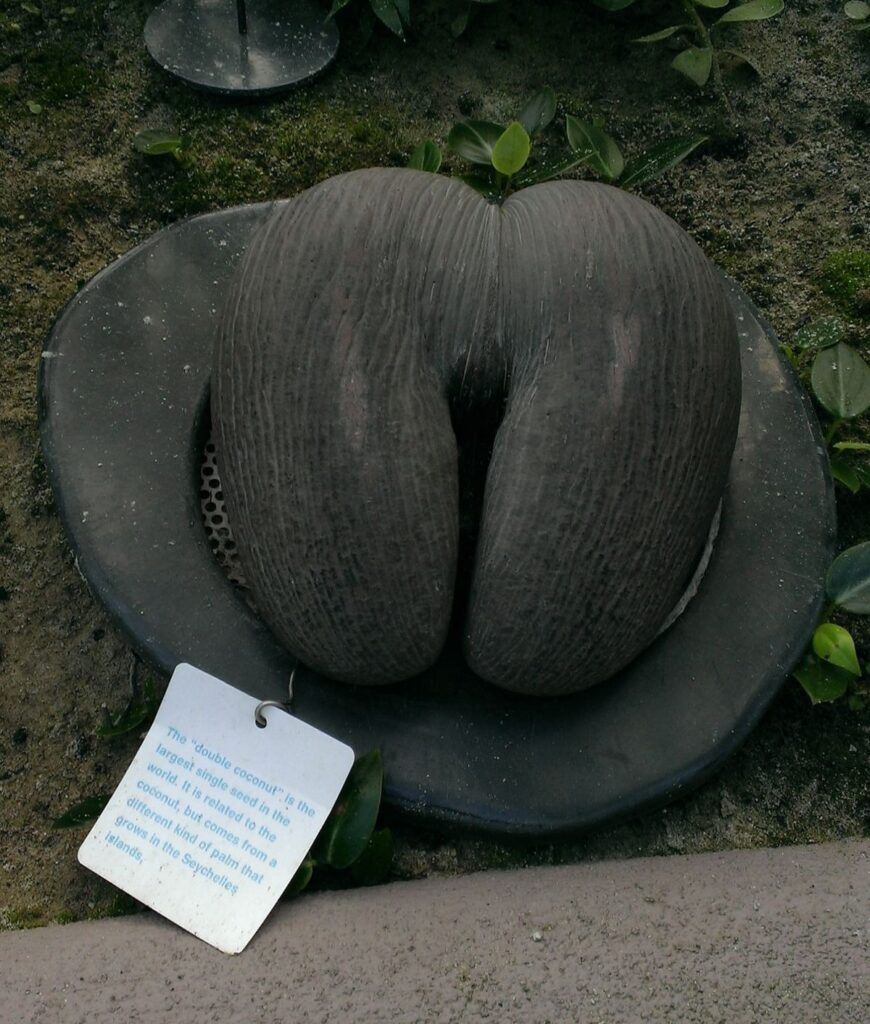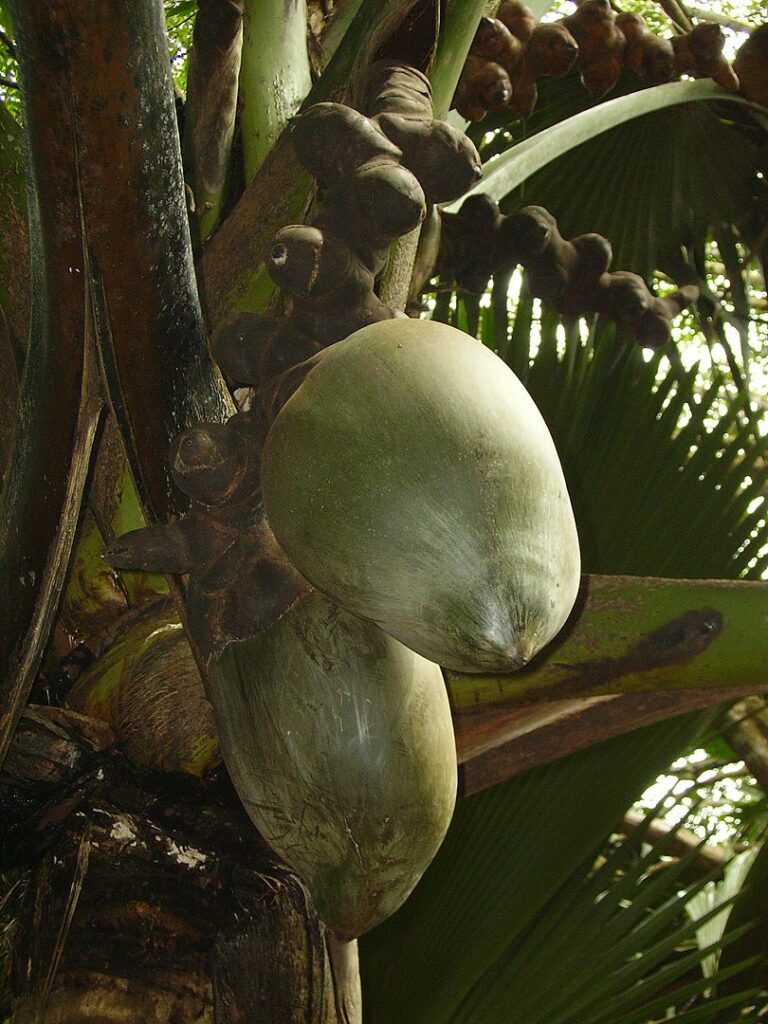
Nestled amidst the breathtaking landscapes of the Seychelles, an archipelago in the Indian Ocean, thrives a remarkable palm that bears the distinction of producing the largest and heaviest seeds in the world.
The seeds of the double coconut, scientifically known as Lodoicea maldivica, have earned fame for their intriguing shape and astonishing weight, tipping the scales at approximately 25 kilograms (55 pounds). Stretching up to half a meter in length, these seeds are a true testament to nature’s ability to create marvels. Endemic to the islands of Praslin and Curieuse in the Seychelles, this palm species stands as the sole representative of its family. In the past, it also flourished on nearby islets such as St Pierre, Chauve-Souris, and Ile Ronde (Round Island), but faced extinction until recent reintroduction efforts.
Legend has it that the double coconut possesses medicinal properties, although scientific evidence to support such claims remains elusive. Nonetheless, the palm continues to captivate the imagination as an aesthetic wonder, with individual nuts fetching prices ranging from £500 to £2,000.
Sadly, like many other plants, the double coconut has fallen victim to overharvesting. Today, only a mere 8,000 wild mature specimens remain, confined to the islands of Praslin and Curieuse. Consequently, the species is classified as Endangered on the IUCN Red List of Threatened Species.

To safeguard this precious palm, both in its natural habitat and in botanical gardens around the world that have successfully cultivated it, the seeds are vigilantly protected. Some are even placed within cages to deter potential poachers.
Interestingly, several palm species closely related to the double coconut also bear some of the world’s largest seeds, although smaller in comparison to their colossal cousin, measuring up to 10 centimeters in length.
Delving into the study of this remarkable species could provide scientists with valuable insights into the evolutionary forces that drive plants to produce exceptionally large seeds. By unraveling the mysteries of the double coconut, we may gain a deeper understanding of nature’s intricate mechanisms.

As conservation efforts intensify, it is our hope that future research will shed further light on this botanical marvel. By unraveling its secrets, we can strive to protect and preserve the awe-inspiring wonders of our natural world for generations to come.


Leave a Reply